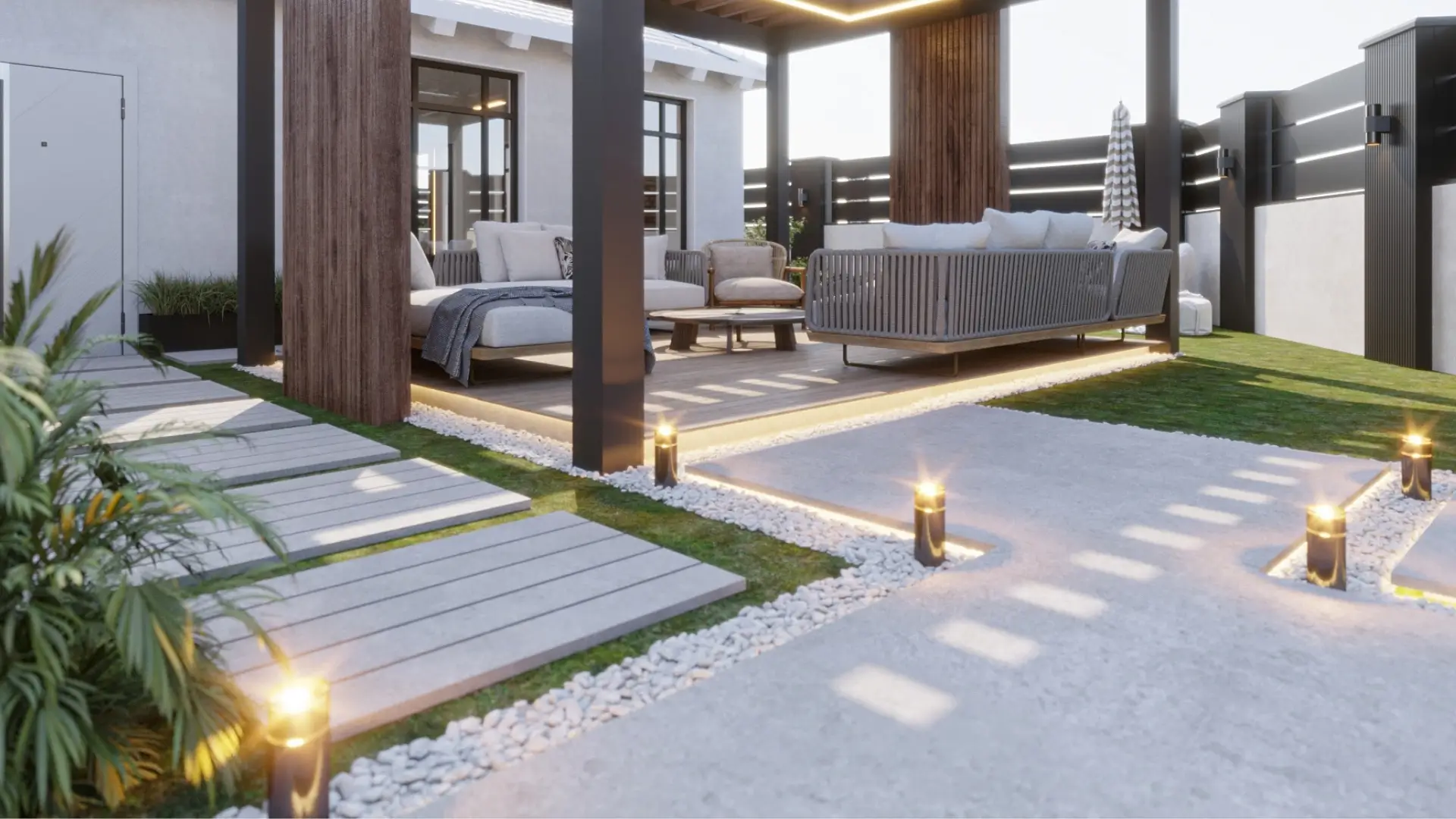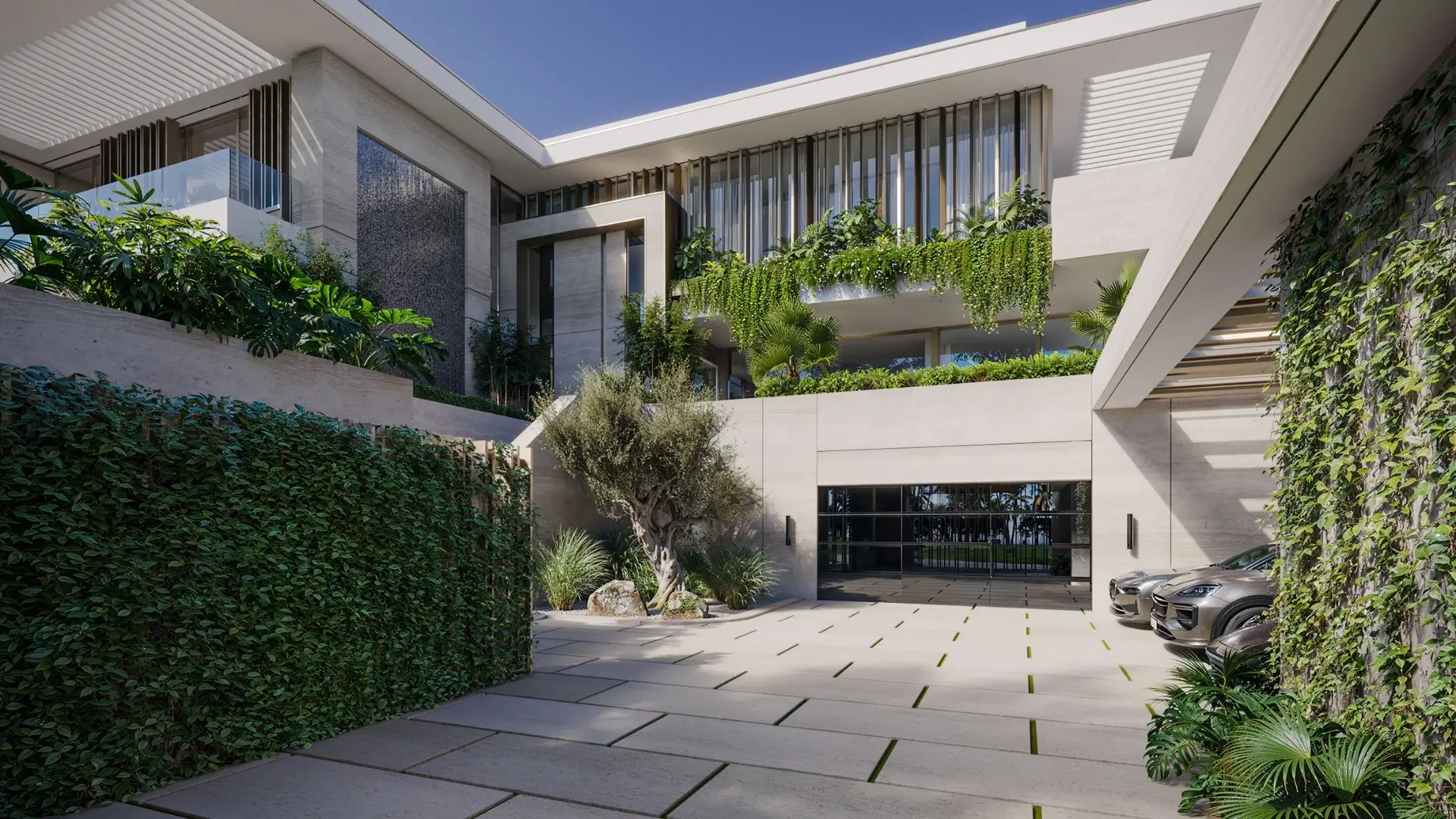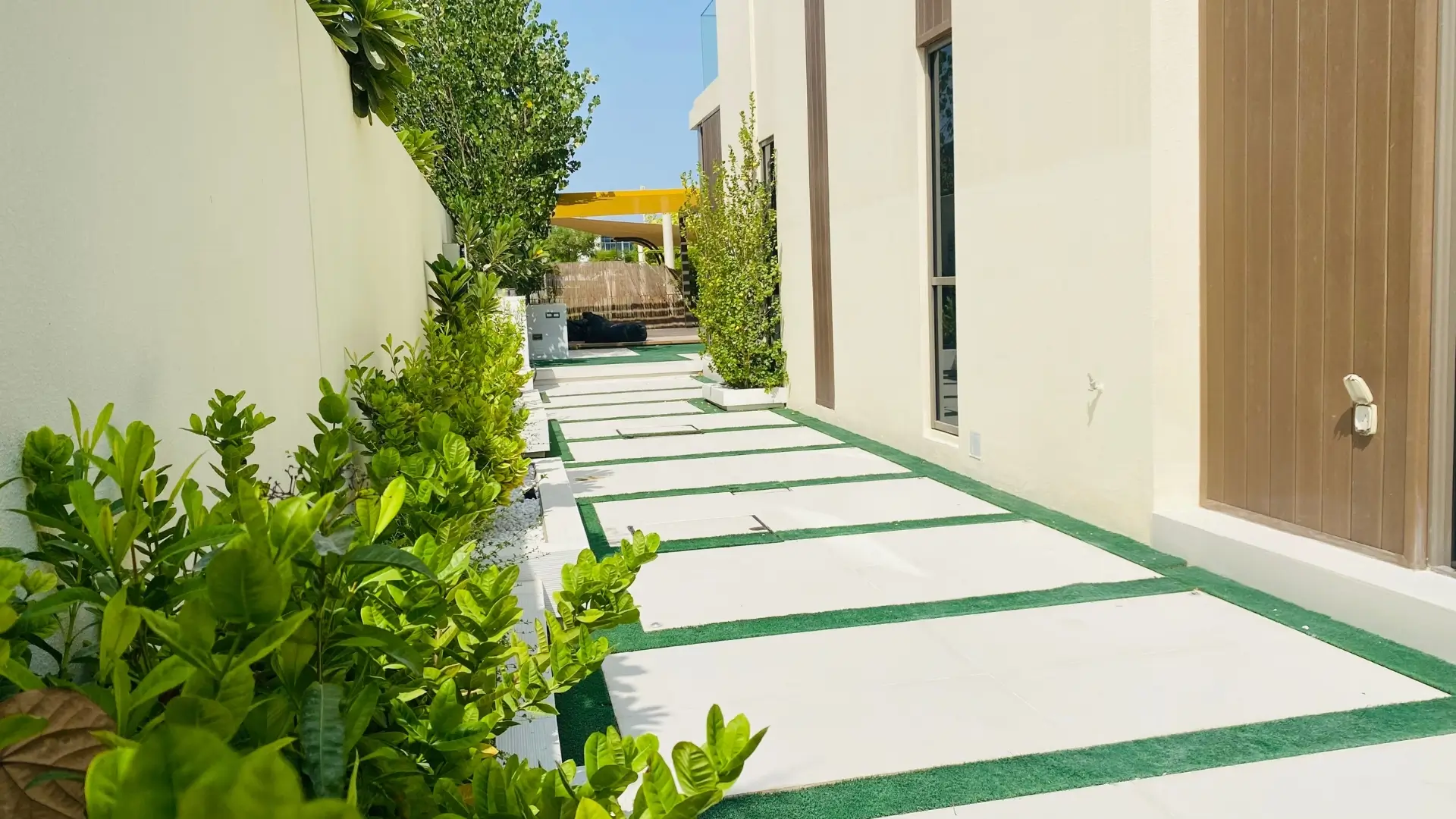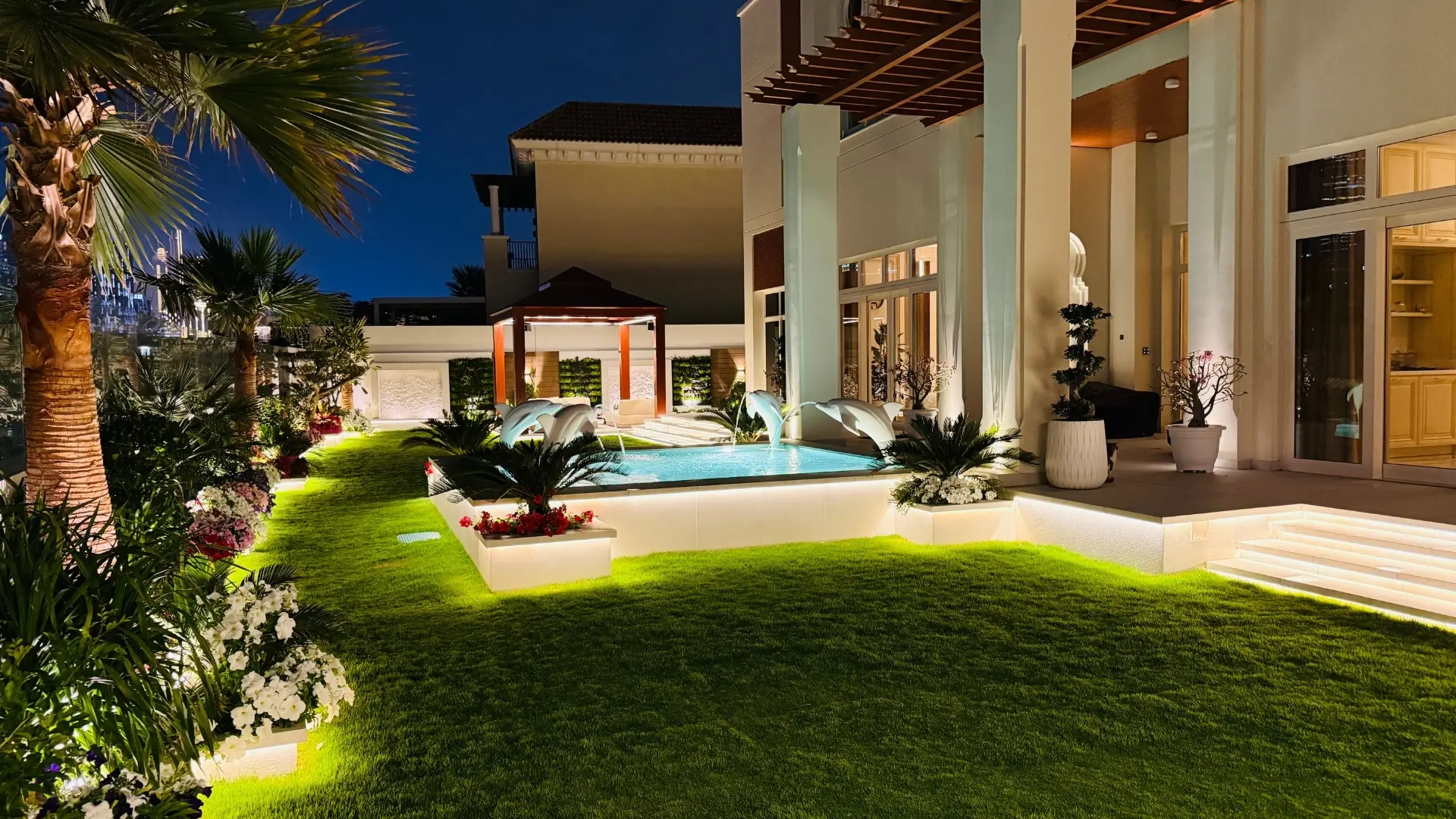Dubai’s gardens are proof that you don’t need a rainforest to create lush, inviting outdoor spaces. With soaring summer temperatures, salty soils in some districts, and water-use considerations across the emirates, smart plant selection is the first step toward a beautiful, healthy and low maintenance landscape. This guide covers the best drought tolerant species for Dubai and the UAE, practical planting and soil tips, irrigation strategies that actually save water, and design ideas so your garden looks great year round.
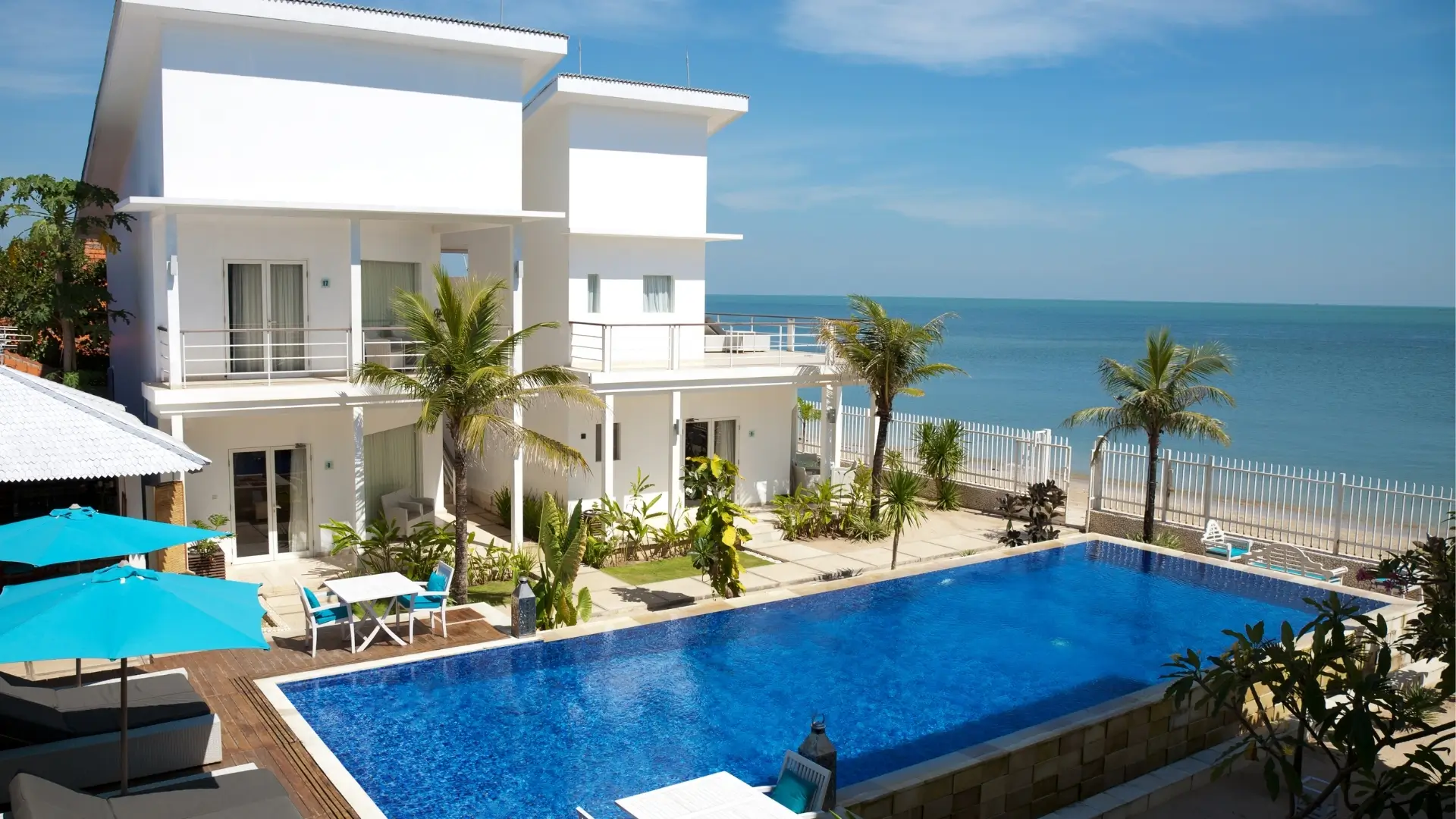
Why drought tolerant planting matters in Dubai
Dubai is an arid environment, long, hot summers, low annual rainfall, and occasional intense storm events. While rain can occur (e.g., the extreme event in April 2024), the long-term climate is still dry and water resources are precious. That means landscapes built for the UAE should prioritize plants that thrive with minimal irrigation, tolerate high heat and sun.
Top drought tolerant plants that perform well in Dubai
Below is a practical list of reliable plants, trees, shrubs, succulents and flowering climbers that combine resilience with great visual impact. Many are commonly available from UAE nurseries and online plant shops.
Trees & large specimens
Ghaf (Prosopis cineraria) — UAE’s native tree, excellent shade, deep roots, extremely drought tolerant and culturally important. Great for larger villa gardens and streetscapes.
Date Palm (Phoenix dactylifera) — Iconic, salt tolerant and adapted to desert heat, provides vertical structure and shade. Commonly stocked by local suppliers.
Flowering shrubs & climbers
Bougainvillea — Colorful, sun loving climber/shrub that is drought tolerant once established. Ideal for pergolas, walls and hedges. Widely available in Dubai.
Oleander (Nerium oleander) — Hardy, evergreen hedge option with long flowering periods, tolerates heat and drought.
Succulents & architectural plants
Agave — Sculptural, very low water need, excellent as focal points or rock garden species.
Yucca — Architectural, drought tolerant, and low maintenance, suitable for full sun beds and planters.
Aloe (Aloe vera and others) — Medicinal, drought tolerant, easy to grow in pots or beds.
Perennials & ornamentals
Lavender (heat-tolerant varieties) — Fragrant, attracts pollinators, and prefers well drained soil.
Texas sage / Leucophyllum (also called Windflower or Sage) — Silvery foliage, purple flowers after heat/humidity; excellent UAE performer.
Agapanthus & Lantana — Colorful, relatively low water needs once established.
Practical planting and soil tips for Dubai conditions
Improve the soil: Most local soils are sandy and sometimes saline. Mixing organic matter (compost, well rotted manure) and water retention amendments (coco coir or compost) into the planting hole helps roots establish and reduces irrigation needs. For high salinity areas, follow specialist guidance (gypsum and proper leaching practices) recommended by local environmental authorities.
Use the right soil depth: Trees and larger shrubs benefit from deeper planting positions with loosened subsoil to encourage root spread, dig wide, not just deep.
Mulch to keep moisture in: A 5–8 cm layer of organic mulch reduces evaporation, cools roots, and slowly improves soil as it breaks down. Avoid piling mulch against trunks.
Choose correct spacing: Drought tolerant plants still need room to grow. Crowding increases competition and stress during heatwaves.
Irrigation: Sprinklers that spray over the surface are convenient but wasteful in hot, windy Dubai conditions. For water efficiency and healthier plants, install drip irrigation or smart irrigation systems that adjust watering based on soil moisture and weather forecasts. Benefits include reduced evaporation, targeted root watering, and up to 30–50% water savings versus traditional systems. Subsurface drip for lawn alternatives and localized emitters for shrubs is an excellent strategy.
Quick irrigation rules:
- Water deeply and infrequently for trees and shrubs. This encourages deep roots.
- For potted succulents, allow soil to dry between waterings.
- Use moisture sensors or smart controllers to prevent overwatering after rare heavy rains.
Seasonal care & maintenance calendar
Winter (Nov–Feb): Best planting season. Temperatures are mild, establishment is easier and water demand is lower. Prune lightly, apply composted mulch, and check irrigation timers.
Spring (Mar–Apr): Monitor for pests as the weather warms. Finish any major planting projects before the heat.
Summer (May–Sep): High evapotranspiration, rely on drip irrigation and shade young plants for the first hot weeks. Avoid heavy pruning that causes new tender growth vulnerable to heat stress.
Autumn (Oct): Reduce watering frequency as temperatures fall, prepare beds for winter planting.
Including a local, month by month checklist tailored to your site will boost success and reduce unnecessary water use.
Design ideas that pair drought tolerant plants with smart landscaping
Mediterranean desert fusion: Combine bougainvillea draped over pergolas with Agave and lavender beds for color, scent and strong textures.
Xeriscape focal courtyard: Use an architectural yucca or agave as a centerpiece, surround with low groundcovers and decorative gravel, add a shaded seating nook.
Living screens and privacy: Oleander or dense bougainvillea hedges create color and privacy with low upkeep.
Container gardens for balconies: Use succulents and dwarf palms in lightweight, well draining mixes, perfect for villa terraces and apartments.
Native pockets: Plant clusters of Ghaf or Acacia for low water shade and biodiversity benefits.
Design tip: Layer plants by water need, group high need plants together and isolate ultra drought tolerant species into low water zones. This zoning makes irrigation far more efficient.
Biodiversity and native plant benefits
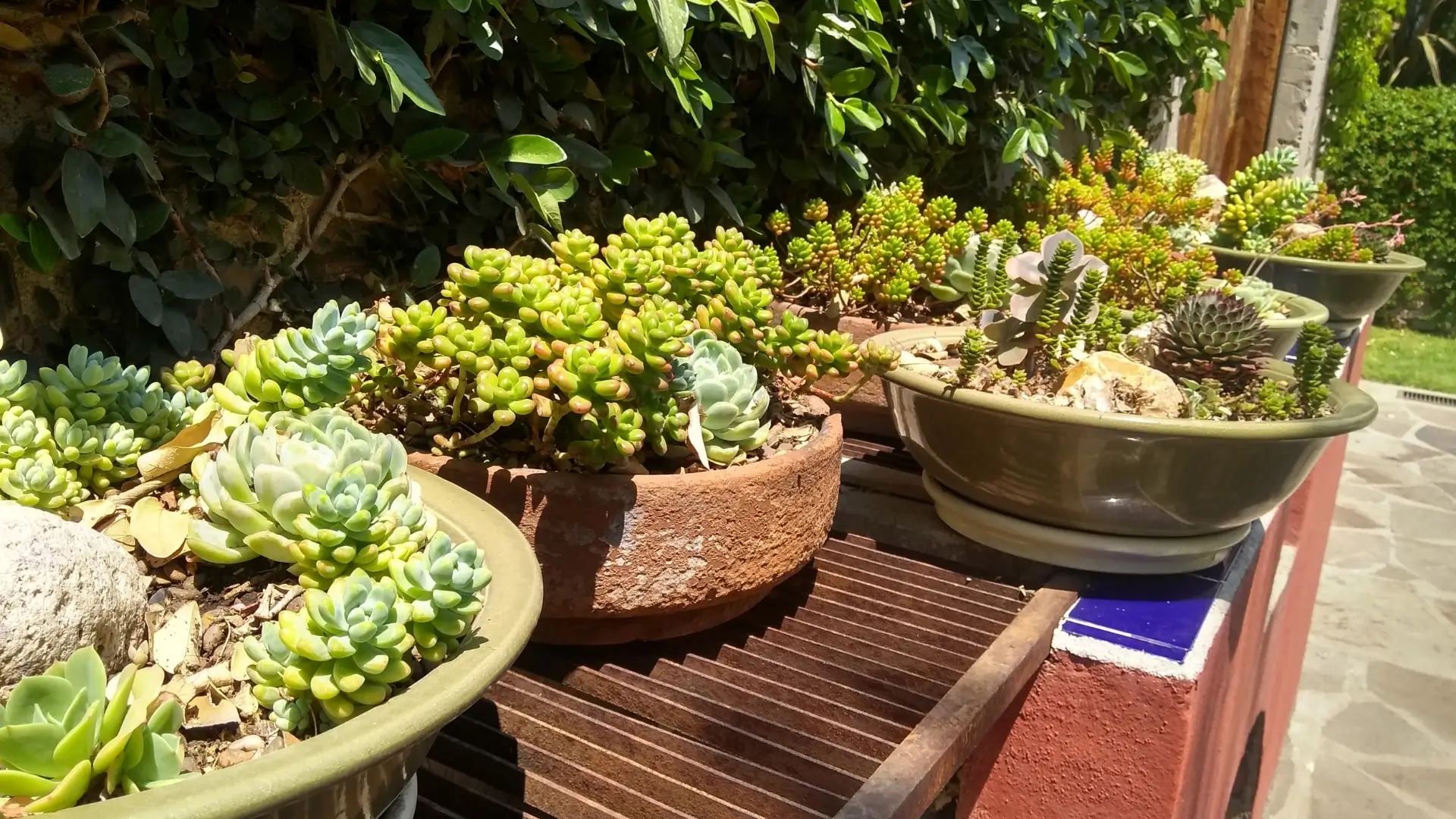
Including native species like the Ghaf and certain Acacia varieties supports local pollinators and requires less ongoing care. Native plants are adapted to temperature extremes and local pests, good for long term sustainability and often supported by local environmental campaigns.
Dealing with extreme events and salt stress
Dubai can experience unusual heavy rainfall events and areas with saline groundwater or soils. To increase resilience:
- Use good drainage and slightly raised beds to avoid waterlogging during rare floods.
- Amend soils and select salt tolerant species (date palms, some acacias and succulents) in coastal or reclaimed areas.
- Plan irrigation to flush salts intermittently if soils show buildup, but only where local regulations and water availability permit.
Sample plant palette for different garden sizes
- Small balcony / courtyard: Dwarf bougainvillea, container aloe, dwarf palm (Chamaerops), rosemary.
- Medium villa garden: Bougainvillea on pergola, yucca focal point, lavender borders, groundcover phlox.
- Large estate / commercial: Ghaf or date palm avenues, oleander hedges, agave accents, drought tolerant lawn alternatives (ornamental grasses and groundcovers).
Sustainability & cost benefits
Drought tolerant landscapes reduce water usage, lower maintenance costs (less mowing, less fertilizer), and often raise property appeal in Dubai’s eco-conscious market. Pairing native plants with smart irrigation maximizes long term savings and supports Dubai’s sustainability goals for urban greenery.
Quick troubleshooting:
Yellowing leaves on succulents: Overwatering reduce frequency and improve drainage.
Stunted growth in sandy soils: Add organic compost and use deeper planting holes.
Salt damage (leaf burn): Rinse salt from foliage after dust storms, and consider switching to more salt-tolerant species.
Poor establishment after planting: Water more frequently for the first 4–12 weeks (depending on species), then taper as roots develop.
Final checklist before you plant
- Choose plants rated for full-sun, high heat and low water.
- Group by water needs and design irrigation zones.
- Improve soil with organic matter and correct pH/salinity issues.
- Mulch and add drip irrigation with timers or smart controllers.
- Plant in cooler months (Oct–Mar) for best establishment.
Want help implementing a drought tolerant landscape in Dubai?
If you’re planning a villa, rooftop garden, corporate campus or a cozy courtyard, Warriors Landscape can design and install a water wise, beautiful garden tailored to Dubai’s climate, complete with plant sourcing, soil prep, and smart irrigation systems. Click through to our services page or get a free consultation to start planning a resilient, low water landscape that looks stunning year round.
How Warriors Landscape Can Help You Create a Stunning, Low Water Garden
Designing a drought tolerant garden in Dubai isn’t just about picking the right plants, it’s about creating a landscape that looks beautiful, saves water, and thrives year-round. Warriors Landscape specializes in transforming outdoor spaces into vibrant, sustainable environments tailored to the UAE’s climate. From sourcing the right drought tolerant plants to preparing soil, installing smart irrigation systems, and crafting designs that blend functionality with beauty, our team handles every step with precision.
Whether you’re planning a villa garden, a rooftop retreat, or a large scale commercial project, we ensure your landscape is both eco friendly and breathtaking. Get in touch with us today to start your journey toward a water wise garden that will flourish in Dubai’s climate.

